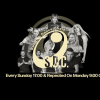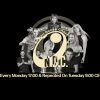-
 play_arrow
play_arrow
Clubalicious Clubalicious Radio
-
 play_arrow
play_arrow
London Calling Podcast Yana Bolder

Jack Endino has been in the press an awful lot in the past few months. With the 20th-anniversary celebration of Nirvana’s Nevermind, everyone wants to find out just how he recorded their debut album, Bleach. But before he handled that project, Endino was jump-starting his producing career with EPs for Soundgarden, Green River and Mudhoney, whose debut single, “Touch Me I’m Sick,” gets this month’s “Classic Tracks” treatment. Interestingly, this song was a case of both artist and producer beginning their careers and putting out a piece of work that would not only put them on the map, but would also fire the powder keg that became known as “Seattle grunge.”
Tracking for “Touch Me I’m Sick” took place at Reciprocal Recording (Seattle), which Chris Hanzsek and Endino opened in 1986. Endino describes the space: “The control room, triangular, was at the narrowest corner of the building, with an entry door right behind the console chair. At the other two points of the triangle were the load-in door and the bathroom, with one small iso room in front of the bathroom. The bathroom had the building’s only window. There were some baseboard heaters, but no A/C or ventilation. In the summer, we would leave the door open at the back of the control room with a floor fan in the doorway. Every time a big truck went by outside, you’d get a dose of exhaust.
“The control room was really tiny, we had terrible monitors and the acoustics of the whole studio were completely dead,” Endino continues. “It was a horrible place to record, but since it was the only studio we knew at the time, Chris and I didn’t realize it! The totally dead acoustics worked to my advantage with bands that liked to record live, like Mudhoney. The room was big and dead enough that you could have a super-loud band all play together, nose-to-nose, but if you close-miked everything, used gobos and were really careful of where the amps and the mics were pointing, the bleed was negligible. Not being isolated from each other, the bands felt like they were still in their rehearsal room.”
The tonality of the room helped in creating that “grunge” atmosphere, especially for a band like Mudhoney, with whom Endino had previously worked, albeit individually: with vocalist Mark Arm in his former band, Green River; with Arm and guitarist Steve Turner in The Thrown-Ups; and with drummer Dan Peters in Bundle of Hiss.
Inside Reciprocal, the band gathered to work on their “Touch Me” demo. Playing “together” live, Endino set up the drums on a small riser at one end of the room, the bass in the iso room in front of the bathroom and guitar amps at the other end of the room from the drums, pointing away, “with gobos also isolating them a bit more,” Endino says. “I tried to minimize bleed with careful placement of mics and instruments because the bleed in that room—what there was of it—wasn’t too sonically useful.” On the placement of the bassist, Endino says, “I hated DI bass, and to this day I rarely use it in a mix. I prefer the sound of a 15- or an 18-inch speaker, close-miked, driven hard with a burly tube amp.”
When you think of Mudhoney, you think “big, fat, fuzzy guitars.” Asked how he got that signature sound, Endino replies, “’I think I said something along the lines of, ‘Are you sure you want the guitars to sound that fuzzy? Okay, then…’ They wanted to capture a crazy garage rock sound, just as they played it. There was not a lot of ‘producing’ to do, except for reminding them to tune, which they needed someone to tell them. [Laughs] It was actually not that easy to record; it was all about mic placement. I just put the mics in the right place, added some 1k and smacked the tape. Mark had an Ampeg combo, maybe a flip-top, and Steve was using a Super Reverb. Both had fuzz boxes, and I remember being very amused that Steve was using two fuzz boxes in series for part of the song. I’m a ProCo Rat guy—I prefer a cleaner tone—but there was probably a Super Fuzz and a Big Muff in the room, along with god knows what other pedals.”
For mic selection, Endino says he was “wingin’ it” as he was new to the producing game, but chose standard fare. For drums, a 57 on snare, 414s as overheads, 421s on toms and D-112 on kick. Shure 58s and 57s handled amps, pointed close to the cones, while a 421 was used on bass. Vocals took a 58 with a pop filter. “You didn’t throw a condenser on a shouter like Mark,” he says. “It just didn’t sound right—too sibilant and nasal.”
Although Endino may have been hampered by Reciprocal’s limited mic closet, he knew that mic placement was critical. “With a band that loud and noisy, all in the same room and a guitar sound with such a high white-noise component, you have to really dig to find the music. Don’t even get me started on the hi-hat blowing everything out. You can’t just put some mics up and settle for the first thing you get. I would listen, go tweak the amp EQ knobs a little, move the mics an inch, listen again, tweak a little more. Sometimes the key was just turning the amp volume down a notch. You’re searching for some tone in a wall of white noise. I got very good at that because all the early grunge bands were using extreme distortion, more than I had ever heard before. It’s the opposite of metal: You have to add midrange. You also can’t distant-mike a guitar tone like that or it just turns into gray mush.”
During tracking, Mudhoney would run through the songs, recording live except for keeper vocals. Inside the control room, Endino recorded to ½-inch 8-track: an Otari MX5050 Mark 3, “a wonderful little machine,” running from the studio’s 20-channel Ramsa board. “I made a lot of the early Sub Pop records on that machine, including Nirvana’s Bleach,” Endino recalls. “It ran at 15 ips, and at first we used dbx with it until I discovered that everything sounded way better without the dbx—tape hiss be damned! That was it for me; I never used noise reduction again, even on 24-track. I rarely did track bouncing or comping back in those days because I learned on an 8-track, and where you going to bounce to? That would have upped the noise a lot, never mind degrading the sound quality. If I had multiple vocal takes, I would unmute back and forth between the tracks while I was mixing, comping it in real time.”
Classic Tracks: The Runaways’ “Cherry Bomb”
With the tracks laid down, Endino began the mix (to ¼-inch at 15 ips on a Revox PR99). Drums (sans snare) were already submixed to two channels, so he panned them left and right. If he wanted more cymbals, he would add some 10k; more kick, add some 80 Hz; more toms, add 1.5k. “I had to learn to get the balance right when I recorded it,” Endino says. “Since the whole kit was getting the same EQ, it was pretty phase-coherent. Snare would be on track 3 so that it had its own reverb send. Bass, I’d compress with whatever we had, probably a Symetrix 522 or 501. Guitars, pan ’em 8:00 and 4:00; lead vocals down the center through another Symetrix compressor. Drums and guitars I didn’t compress: The Otari did enough, not to mention all those fuzz boxes. I never mixed with stereo bus compression, and still usually don’t. It makes you work harder at getting your mix right. Vocals were distorted ‘live’ during the mix by being re-amped through my Twin and brought back to channel 9 of the console so I could blend the clean and distorted vocals for maximum intelligibility. I think there’s a little slap echo, too.”
All in all, the sessions for the demo came down quickly: an initial 6-hour tracking session, second 5-hour session for vocals and mixing, and a 3-hour session for mixing or remixing. A total of 14 hours for five songs, costing the label a whopping $325.
Prior to the release of “Touch Me I’m Sick,” Sub Pop sent a five-song Mudhoney tape to New York–based Sonic Youth, who proposed a split-single where they would cover “Touch Me I’m Sick” and Mudhoney would do Sonics’ “Halloween.” This limited-edition 7-inch vinyl hit the streets in December 1988, four months after “Touch Me I’m Sick” was officially released.
Mudhoney’s single came out as a 7-inch vinyl; in distribution were 800 clear coffee-brown vinyl copies, 200 black vinyl copies and a few assorted vinyl color copies. The record, which came in a white paper bag without a picture sleeve, had an inscription on the A-side: “What does the word ‘crack’ mean to you?” The B-side sticker featured the toilet picture that would become the cover art of the sleeved second edition of the single. The track would never quite propel the band into mainstream acceptance, but it did have an incredible influence on other local musicians, including Nirvana’s Kurt Cobain, as well as putting Seattle squarely on the map as the capital of grunge music.
As for the studio, Reciprocal closed in 1991, but still remained a music-recording space, most recently as the temporary home of Hall of Justice run by Death Cab for Cutie’s Chris Walla.
For Endino, this track was at the early stages of his career, and he didn’t consider himself a “producer” yet. “I was still focused on playing guitar for Skin Yard. The UK press went nuts for the Mudhoney single, though. No one had heard anything like it before. It took me awhile to realize the impact it had. I guess people were kind of whacked over the head by the sound of it. It’s a nasty little record. [Laughs]” Since then, he’s been in demand as a go-to rock producer for Nirvana, Soundgarden, TAD, Screaming Trees, Afghan Whigs and many more. He’s still in Seattle, as an independent engineer/producer, most recently working on the new Screaming Trees record on Sunyata Music.
This article was originally posted in November, 2011.
Written by: Admin
Similar posts
Recent Posts
- 🎶 New Music: JID, OneRepublic, Morgan Wallen, Post Malone, MarkCutz, Kidd Spin + More!
- Classic Tracks: The Fireballs’ “Sugar Shack”
- Classic Tracks: Arlo Guthrie’s “City of New Orleans”
- Classic Track: k.d. lang’s “Constant Craving”
- Classic Tracks: Waylon Jennings’ “Are You Sure Hank Done It This Way”
Recent Comments
No comments to show.Featured post

Latest posts

🎶 New Music: JID, OneRepublic, Morgan Wallen, Post Malone, MarkCutz, Kidd Spin + More!

Classic Tracks: The Fireballs’ “Sugar Shack”

Classic Tracks: Arlo Guthrie’s “City of New Orleans”

Classic Track: k.d. lang’s “Constant Craving”

Classic Tracks: Waylon Jennings’ “Are You Sure Hank Done It This Way”
Current show

In Session
Sister Bliss
Sister Bliss is one of the true pioneers of modern dance music and the musical force behind the multi-million selling ionic British band Faithless. Each week, Sister Bliss In Session showcases the world's best new upfront electronic music, spinning world exclusives, a live DJ mix, A List artists and DJs on the phone, and a run down of the taste-making Cool Cuts Chart.
closeUpcoming shows

Fresh Is Fresh
This Weeks Hottest Releases
02:00 - 09:00
Swedish Dance Chart
09:00 - 11:00

Fresh Is Fresh
This Weeks Hottest Releases
11:00 - 16:00
In The Mix
Tony Kay
16:00 - 17:00
Norwegian Dance Chart
Top 40 Hottest Tracks in Norway
17:00 - 19:00Chart
Powered by Dee jay promotions visit us







 Invalid license, for more info click here
Invalid license, for more info click here